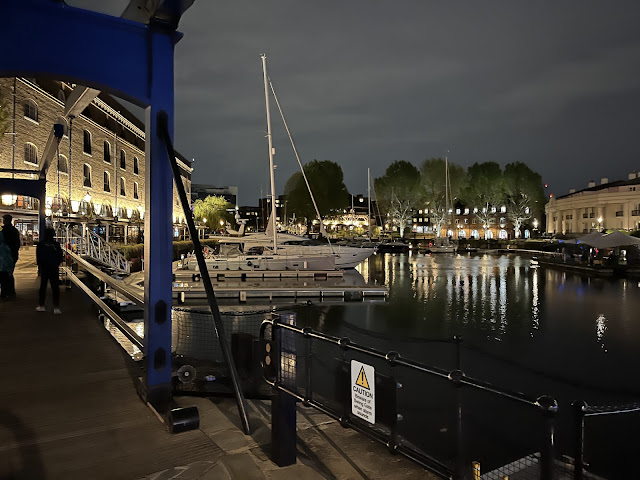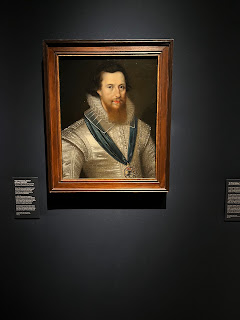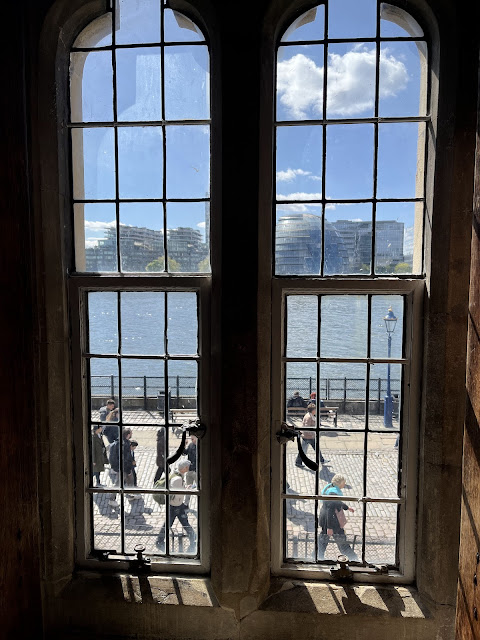Nestled at the feet of the modern city is a castle of white stone that’s been standing on the banks of the Thames for nearly 1000 years. The Tower of London is part-palace, part-prison and a fun, creepy way to do something educational. The entire complex is surrounded by a giant wall that opens out on the river and houses a city-within-a-city where a select group of people still live today.
There’s the White Tower, the Jewel Tower, The Bloody Tower—basically, all kindsa towers where human drama and tragedy unfolded in all manner of dark and spooky ways. For instance, this is the place that King Henry VIII made famous for throwing people who pissed him off before he’d have them killed. Two of his six wives were executed here, along with several political foes and former-friends of his who eventually fell from his good graces for one reason or another. You can tour the rooms where Anne Boleyn was kept waiting for her beheading and see the cells where other prisoners etched words in the stone walls. Sir Walter Raleigh was also imprisoned here, two different times for pissing off two different monarchs. His first jailer was Henry VIII’s daughter Queen Elizabeth I, who liked him too much to actually kill him. He was later thrown back in the Tower by Elizabeth I's successor James VI, along with his entire family. You can walk around a reconstruction of their apartments and the little herb garden that he worked on while he hoped James wouldn’t kill him (until he did). I was surprised to discover a tower named after a guy I’m supposedly related to way back named Robert Devereux, who also ended up dying here. The write-up beside his picture in the National Portrait Gallery claims he was the “last favorite” of Queen Elizabeth I, but let’s just say it didn’t end well for him either.
The “palace” aspect of the Tower’s history is represented by the “medieval palace”, which is actually a collection of towers maintained to look as they did when previous kings used them as a residence. You can tour recreations of their bedrooms and look out the windows at the same river kings and queens peered out on centuries ago.
The Jewel Tower houses the Crown Jewels, along with a ton of other artifacts. Among them is King Henry VIII’s suit of armor which includes a laughably large codpiece. The jewel collection features a diamond the width of a human thyroid called the Koh-i-Noor, which is one of the largest diamonds in the world and possibly the main attraction of the Tower of London for some. As with anything popular, this causes a considerable amount of queuing upon entry to the Jewel Tower and a good bit of slow-walking through the exhibits. As you might recall, lines can go to hell in my opinion. Nevertheless, if you come early and hit the Jewel Tower first, the line moves much faster than it does later in the afternoon. The added bonus of a conveyor belt past some of the jewel cases speeds the lingering lookie-loos along. It moves them like heads of broccoli getting rung up at the Aldi and keeps people from holding up the line while they sketch a mental still-life of every detail. If you go early, it’s worth it—but if you’re allergic to lines, there’s plenty more to see.
 |
| The Jewel Tower |
The lived-in museum aspect of the Tower of London is particularly literal, in that roughly 30 Yeoman Warders live with their families in a series of apartments built into the Tower walls. You’ll see these guys roaming around in conspicuous costumes and top hats (that are actually an official form of military dress). These positions are awarded to men and (more recently) women who’ve fulfilled at least 22 years of military service along with a very specific set of other criteria. You’ll see them stationed around the Tower, giving directions and answering questions. They also offer tours on a revolving basis throughout the day whose groups you can jump into for more in-depth anecdotes and explanations of the Towers history and landmarks. Our Yeoman Warder tour guide was knowledgeable and funny in the most dry and British way. It definitely added to our experience of the Tower.
Another fun function of the Yeoman Warders is to conduct the “Ceremony of the Keys”, which is a fancy name for the official locking of the Tower every night. This exercise has been taking place for hundreds of years and is a lot like the changing of the guard, in that it’s highly choreographed and precisely scripted. The ceremony is open to the public and tickets aren’t expensive, but they’re pretty hard to get due to the limited number of people permitted for viewing each night. Photos of the actual ceremony are not allowed and you have to be absolutely quiet while it’s underway, so this event might not be for you if you think you might have trouble with either of those requirements. The ceremony takes place at 9:30pm, so you can expect a dark and spooky vibe, old-timey lanterns, a big jangly set of keys, and a troop of stoic Yeoman Warders marching across the dimly lit cobblestones.
 |
| The White Tower lit up before the Ceremony of the Keys |
Even though it’s not your standard museum, you’ll still need to pack a pair of “patient pants” when visiting the Tower of London. There will be plenty of walking, so people with young children and/or mobility issues can expect to encounter some challenging situations. For instance, the cobblestones are pretty rugged, more like smooth rocks dropped haphazardly out of the sky than a surface designed to be flat or walkable in any way. On the way out of our visit, I noticed a “buggy corale” for strollers. The very idea of a parent trying to muscle a stroller over such impossible terrain suggests that the longstanding tradition of torture within the walls of the Tower is still thriving. I can only imagine wheelchairs or walkers would be infinitely worse.
There will also be crowds. We finished up our tour just in time for all the rowdy British field trip kids to arrive en masse, loud as hell and blocking every narrow passageway with the delirious oblivion of school-aged children let loose in public. There's room to spread out around the spacious grounds, but you can expect cramped quarters and (yes) slow-walking through some of the high-traffic indoor areas.
 |
| En route to The Tower of London after dinner at St. Katharine Dock |
The Tower is also huge, so you’ll need to break up the visit to keep your eyes from glazing over. We saw the Crown Jewels first, then took a break at the cafe for some French fries and drinks before we headed back out to the other areas of interest. The Tower of London closes for the general public at 5:30pm and then opens again later that night for the small group of people with tickets to attend the Ceremony of the Keys. For us, that created a nice little break, where we went back to the flat to rest and came back out to get dinner close to the Tower before heading into the Ceremony of the Keys. We ate at a giant pub called the Dickens Inn and walked around Katharine Docks, which lights up nicely at night.
 |
| View of the old city and the new |
 |
| View of Tower Bridge from the entrance to the Tower of London before the Ceremony of the Keys |
All told, it’s best to make a day of it when touring the Tower of London. Give yourself time to spread out the visit. Take breaks. Have snacks. Take a Yeoman Warder tour. You’ll see things, you’ll learn things, and you’ll still like each other when it’s over.









Comments
Post a Comment